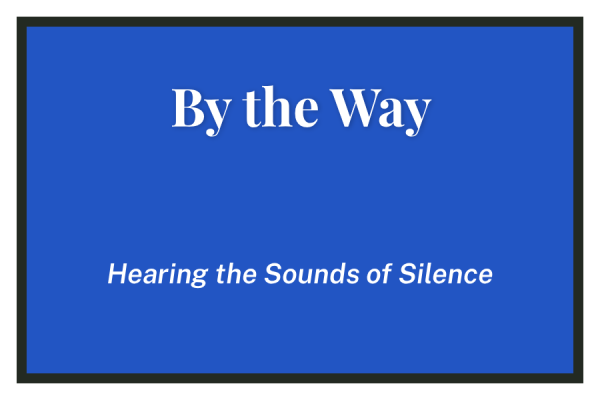The Inbox
Film is often regarded as a lesser medium, especially when it comes to K-12 education. However, for good cinema to survive, it needs to be taught in schools. That should start at Parker.
Over the past year I have entered the rich worlds of the Xanadu mansion, a block in the beautiful brownstones of Brooklyn during the hottest day of summer, the war room during a comical nuclear strike, the cliffs of Sweden as a knight plays chess with death, and had my view of what it means to be a human transformed.
Yet, in school, we aren’t taught these films that are as poetic and powerful as any piece of fiction ever created. A majority of students are only exposed to films they choose to seek out which these days tends to mean comic book movies. This isn’t to say they’re bad, I enjoy many of the Marvel movies, however, this shouldn’t be the only exposure to film that students receive. This is for two main reasons.
The first is simply the power of cinema. The ability to move the camera and the visceral sounds as well as shooting on location can create some of the most impactful storytelling. In June, I watched a film that is among the most powerful films I have ever seen: “The Battle of the Algiers.” It centers on guerilla fighters and French fighters during the beginning of the war for Algerian independence. Showing the battle in a very objective, cinema verite style, making it almost resemble a documentary, allows the viewer to empathize with both the freedom fighters and the French, creating a film that is depressingly poignant today.
The second reason film should be taught is to have a more educated film public. In late 2019, Martin Scorsese, one of the greatest directors in history, wrote an Op-Ed in “the New York Times” that posited cinema, as he knew it, was being killed by Marvel movies and other such “theme park movies.” Much of his argument comes down to the fact that most theaters are being filled with franchise films with hundred million dollar budgets. This means that great films like “The Farewell,” “The Sun,” and even a film by one of the most celebrated directors, Orson Welles, which was recently edited and released posthumously by Netflix, are not seen by many people. I believe if you equip students with the tools to understand what makes a great film, and if you expose them to great, non-mega franchise films, they will be more likely to watch these indie films.
Now it’s all well and good to talk about this from a very broad perspective, but how would that look? I have only been through the 6th-9th grade curricula thus far, so I will only make recommendations for those classes, and I will only be including fictions. I suggest that these films be incorporated into the English curriculum and be taught in a similar way to a play in that the focus is on the script but some time is set aside to look at the other elements.
I honestly don’t remember sixth grade too much, however, I believe “The Bicycle Thief” should be added to the curriculum. This is a beautifully simple Italian film, made just after WWII, about a man looking for a job, a foundational film in the Italian neorealist movement which I believe would be perfect.
For seventh grade I would strike one of the worst Coppola films I have seen, “The Outsiders,” and I would add Eli Kazan’s “On the Waterfront,” which features one of the greatest performances in history from Marlon Brando as well as an excellent plot centering on questions of morality and complicit silence. This is not only a classic of cinema, but the questions it poses are ideal for this age group.
In eighth grade, I would eliminate the monstrosity of a film that is “The Hate You Give,” and add my personal favorite film “Do the Right Thing.” This classic Spike Lee joint addresses issues of police brutality 26 years before the Black Lives Matter movement would start, and looks at the racial dynamics on a hot day in Brooklyn in a way more nuanced than any other piece of media I have read or seen.
For ninth grade, I would add two films. The first is “Citizen Kane” which I believe should be put in the unit on vignettes. Citizen Kane is the great American film, one that is consistently ranked as the best film ever made, and tells the story of a man who becomes as powerful as any man but falls like Icarus and dies alone. The second film I would add is “Dr. Strangelove or How I Learned to Stop Worrying and Love the Bomb” the greatest absurdist comedy made by one of the greatest directors in history, Stanley Kubrick.
Finally, I suggest the creation of two elective classes which teach film in a more in depth way. I would suggest splitting it into a pre-new hollywood class and a new Hollywood and after period. This may not be the perfect way to break up cinema’s time periods, however it is a fairly simple way to go about it. New Hollywood was a movement which started in the mid 60’s and lasted through the 70’s and into the 80’s. In my opinion it’s the place to split film history as new Hollywood brought a new approach to filmmaking that changed the landscape of cinema and falls in about the middle of cinema history chronologically. I also hope that there is some emphasis on foreign movements like German expressionism, Italian neorealism, etc.
I love film. To quote “A Clockwork Orange” by Stanley Kubrick, “It’s funny how the colors of the real world only seem really real when you viddy (see) them on the screen.” I believe that every student should be exposed to great cinema by the time they leave Parker. Until that happens here are 10 essential films everyone should watch: “Do the Right Thing,” “The Battle of the Algiers,” “Dr. Strangelove,” “The Godfather,” “Ikiru,” “Portrait of a Lady On Fire,” “The Seventh Seal,” “Metropolis,” “Taxi Driver,” and “Lost in Translation.”







